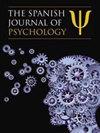酒精使用障碍临床人群康复资本量表评估的西班牙验证
IF 1.8
4区 心理学
Q1 PSYCHOLOGY
引用次数: 1
摘要
从酒精使用障碍中恢复包括实现积极的生活方式改变,健康和长期戒酒的某些资源。本研究旨在翻译和验证评估资本恢复(ARC)在西班牙临床样本的个人酒精使用障碍,在戒断。参与者是184名参加门诊治疗的患者。他们在一次会议中使用改编版本的ARC(西班牙语缩写:Valoración del Capital de Recuperación, VCR)和WHOQOL-BREF(生活质量量表)进行评估。统计分析包括信度计算、收敛效度计算(与WHOQOL-BREF的关系)、特异性和敏感性计算以及基于内部结构的效度计算(验证性因子分析)。VCR评分具有较好的信度值(α = 0.90),但与WHOQOL-BREF的收敛效度较低(Rho = 0.33 ~ 0.53)。VCR可以区分早期清醒和稳定清醒的患者(χ2 = 20.55, p < 0.01)。ROC曲线显示稳定恢复(戒酒5年)的判别值显著(p < 0.05),敏感性为85.2%,特异性为71.2%。此外,验证性因子分析表明存在单一因素,具有相对可接受的拟合优度和因子负荷值。我们使用ULS参数估计来研究VCR特性,这是一种评估戒酒酒精使用障碍个体临床人群恢复情况的合适工具。本文章由计算机程序翻译,如有差异,请以英文原文为准。
Spanish Validation of the Assessment of Recovery Capital Scale in Clinical Population with Alcohol Use Disorder
Abstract Recovery from alcohol use disorder involves achieving certain resources for positive lifestyle changes, well-being, and long-term abstinence. The present study aims to translate and validate the Assessment Capital Recovery (ARC) in a Spanish clinical sample of individuals with alcohol use disorder, in abstinence. The participants were 184 patients who attended outpatient treatments. They were evaluated with the adapted version of the ARC (Spanish abbreviation: “Valoración del Capital de Recuperación, VCR”) and by WHOQOL-BREF (quality of life scale), in one session. Statistical analysis included the calculation of reliability, convergent validity (relationship with WHOQOL-BREF), specificity and sensitivity, as well as validity based on internal structure (confirmatory factor analysis). VCR scores show appropriate values for reliability (α = .90), and a low convergent validity with WHOQOL-BREF (Rho = .33–.53). The VCR appears to distinguish between patients with early and stable sobriety (χ2 = 20.55, p < .01). The ROC curve indicates significant discrimination values (p < .05) for stable recovery (5 years of abstinence) and sensitivity of 85.2% and specificity of 71.2%. Further, confirmatory factor analysis suggests the presence of a single factor, with relatively acceptable values of goodness of fit and factor loadings. We used ULS parameter estimation to study VCR properties, an appropriate tool for assessing recovery in clinical populations of individuals with alcohol use disorder in abstinence.
求助全文
通过发布文献求助,成功后即可免费获取论文全文。
去求助
来源期刊

Spanish Journal of Psychology
Arts and Humanities-Language and Linguistics
CiteScore
3.60
自引率
0.00%
发文量
44
期刊介绍:
The Spanish Journal of Psychology is published with the aim of promoting the international dissemination of relevant empirical research and theoretical and methodological proposals in the various areas of specialization within psychology.
The first Spanish journal with an international scope published entirely in English.
 求助内容:
求助内容: 应助结果提醒方式:
应助结果提醒方式:


